Hello, My Name Is Colin Stearman!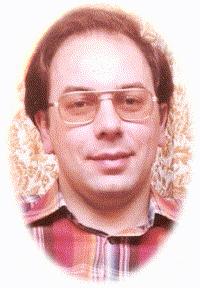
I assume you are looking at this page because you want to find out more about me. My life history is about as interesting as reading the ingredients on the Corn Flakes packet, so if you surf away now I wouldn’t blame you. ![]()
You’re still here! Ok, be ready to be bored stiff. ![]() This is all based on my (possibly faulty) memory, so I apologize in advance for any errors.
This is all based on my (possibly faulty) memory, so I apologize in advance for any errors.
I was born in Brighton, Sussex, England in 1946 (yes I know, I’m old, but I’m pretty sure I am right about that!) and lived there until I was around 4 years old. Then we moved to the Camberley, Surrey area when my father’s career took him to Southern Instruments. I went to Hawley Primary School until around aged 10.
My father then made a career move to become a lecturer at the College of Aeronautics (now Cranfield University) in Bedfordshire. Living at the College (called “The Camp” by envious Cranfield village residents, I recall) was a somewhat strange existence. The College staff were housed in a residential area adjacent to the campus. It was some distance from the village and so never really integrated with the locals. As a result us kids formed a fairly close-kit group.
Living at the College has given me a life-long interest in airplanes (aeroplanes), and was lucky enough to see a TSR2, Avro Lancaster, Boxkite (used in the film Those Magnificent Men In The Flying Machines, and flown to Cranfield and then to the Shuttleworth Collection by Bert Russell, I am impressed!), de Havilland Dragon Rapide and many others, including, although not strictly airplanes, a V1 (doodlebug) and V2 rocket. I also spent time on the airfield “helping” with the winch-launch of gliders (but never got a ride), and picking mushrooms in the early morning (a frowned-upon endeavor by the officials and eventually stopped by spraying fungicide on the grass where they grew, the philistines!)
In those days I was a keen cyclist and spent many miles and hours “in the saddle”. I had a number of similarly-minded friends and took short and long cycling trips with them. There are two memorable ones. The first was around Devon and Cornwall, a distance of around 240 miles in two weeks. My friend and I had fitted our bikes with only one fixed gear (meaning only one fairly high gear ratio and no free-wheeling), which meant you had to keep peddling no matter what, or you were thrown of the handlebars! The other was a trip with another friend that took us around Dorset and Hampshire. In both cases we stayed in Youth Hostels, which made for a cheap holiday.
After passing the 11+ exam my parents looked at having me go to Bedford Modern School. But it was anything but modern, an ancient gothic structure I recall and I hated it. Although from their website it looks like they moved out of town and it’s anything but ancient now. As a result I was enrolled at Stratton Grammar School in Biggleswade, clear across the county 24 miles away. Schools were closer in Buckinghamshire but that was a different county and might has well have been a different country as far as educational authorities were concerned. As a result I spent over an hour each way on buses, both public and private, to get there and back. That will be time I’ll never get back! And if I missed the homeward-bound bus it was a major problem. A side-effect of this was no participation in extra-curricula events at the school. What were the authorities thinking?
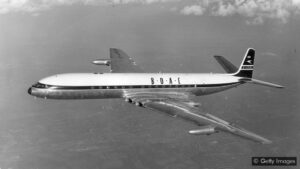
de Havilland Comet 4B
In 1964 my family was posted to Bangalore, India for my father to participate in the teaching for an ICAO educational exchange program. After a grueling 24+ hour flight out on a Comet 4B, passing through Kuwait, Bombay (now Mumbai) and Hyderabad, we arrived exhausted at Bangalore Airport. I noticed a girl of about my age on the plane (as you would as a teenage boy!) but didn’t think she noticed me. However, the next day she and all her boy and girl mates arrived at our hotel and invited us to join their group. A very friendly gesture and I never did find out how she discovered where we were staying. As I was in the middle of schooling I did not expect to stay in India for the full 12 months. A somewhat unsuccessful attempt was made to continue my education while there (entirely my fault that it failed), but the end result was that I left after 3 months to start the second year of 6th form back at Stratton. But that 3 months was a very memorable time, hanging out with Indian, Anglo-Indian, German and British friends, and all apparently color-blind! Never did see the Taj Mahal though, which was a pity.
The return trip by myself was a major adventure for a young boy, and one that I recounted to my parents in a letter to them after arriving home. So I have an accurate account of the details of the trip. For me anyway, it makes interesting reading so I reproduce excerpts from it here.
“30-9-64 After I left you I sat in the rear seat on the starboard side. When the hostesses had finished doing everything they came and sat in the two seats opposite me. When we got to Hyderabad I decided to remain on the plane as it was raining. We were supposed to stop for half an hour but because of the rain it took an hour. I had quite an interesting chat to the hostesses. The weather was pretty rough after Hyderabad, and we reached Delhi at 11:45(am). It was a terrible rush, and if wasn’t sure of the order to do things. I got £3 (£60/$82 today) for 42Rupees. The customs man nearly stopped me taking the other 8Rupees out of the country. Even so, I was one of the first to get on board the plane. It left at 1 o’clock. If it had gone at 12:30 I would have missed it. I sat in the middle seat of a block of three, five rows from the front. I made friends with a young man from N. India. He spoke good English, and was going to the Institute of Education, Univ. of London. It was a five hour trip to Cairo, and I wasn’t able to sleep. I remained on board at Cairo, and the temperature was 20°C. We then flew on to Geneva. Dawn was a beautiful sight [‘Dawn’ wasn’t one of the hostesses either!!](sic), and we reached Geneva at 7am their time. It was a very nice airport. We were supposed to wait for 1 hour. We were issued a card for a free soft drink, and so I had a coffee. At 8 they told us the weather was bad at London and Frankfurt, and the plane wouldn’t go until 9. They gave us another “free soft drink” card. At 9 they said that Frankfurt people would go on another flight, and we would go direct to London at 10. They gave us another “free drink” card, so my friend and I had a sandwich and glass of lager. At 10:15 we set off. It was an hour’s flight. We had to circle London for 15 mins before we could land. We landed at 11:35.. By 12 I was on the coach. The health, passport and customs was easy. I got a taxi from the coach terminal to Victoria Underground. Cost 2/- (£1.70/$2.30 today) with 6d (£0.17/$0.23 today) tip. I got on the first train that came, and found it was the District Line. 3 stations later I got off and immediately got on the Circle line. I ran up the stairs at St. Pancras, and was in the station by 2:15. I grabbed a ticket and phoned (my friend’s) neighbour. I then ran and just got on the 2:35 train. Reached Bedford at 3:45. (My friend) was waiting for me. I hadn’t slept at all on the journey, and felt nearly dead. I decided I’d have to get in a taxi. We got a nice (Ford) Zephyr 6 and went straight to (my friend’s house). Cost 10/- (£10/$14 today). I had something to eat, and, most oddly, felt wide awake.”
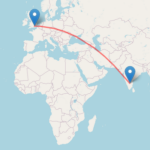
Bangalore to Hyderabad is about a 2 hour flight, and Hyderabad to Delhi is about a 3 hour flight. So allowing for a 1 hour stopover in Hyderabad I must have left about 6am local time (12:30am GMT). Based on the arrival time in Bedford (3:45pm the next day) I calculate it was about a 28 hour journey. I did telegram my parents to confirm arrival, as the letter would have taken a week or more to get to them. On today’s planes a direct flight would take about 10 hours! The journey saga makes interesting reading for me certainly, but does indicate to the reader what international air travel must have been like in 1964.
After a more or less happy 7 years at Stratton I emerged with eight GCE ‘0’ levels and one ‘A’ level. I was not much of a student! So it was time to look towards college. I applied for a number of places (6 I recall) and one was Imperial College, London. I interviewed there and one professor asked me a physics question which I thought I answered correctly. But he disagreed and told me the “right” answer. I have reflected on that over the years and concluded that my answer was right and his wrong, and I’ve never forgiven them for that (if you want to know what the question and answers were contact me). As a result they wanted ‘B’s or better in all 3 ‘A’ level subjects (and my first born son I seem to remember ![]() ) and my exam results were so mediocre that I did not even meet the requirements of the lowliest of the six. So my father pulled some strings and got me places at Letchworth and Leicester Technical Colleges. I accepted the latter and found myself doing a three year Higher National Diploma (HND) course in Electrical and Electronic Engineering.
) and my exam results were so mediocre that I did not even meet the requirements of the lowliest of the six. So my father pulled some strings and got me places at Letchworth and Leicester Technical Colleges. I accepted the latter and found myself doing a three year Higher National Diploma (HND) course in Electrical and Electronic Engineering.
Leicester College of Art and Technology (now DeMontfort University) was a good place for me and I similarly had a more or less happy time there. HND was a good program for me too, as it required related practical experience in industry during the summer and I have always tended towards the practical. I spent summers working at Parmeko in Leicester. I performed much better academically because I was studying subjects of immediate interest. I made some good friends, some of which I am still in touch with. I passed my final exams with much better results, I am pleased to say.
During that time my parents purchased a house in Sussex (actually an old cottage in serious need of some TLC) and they spent the next year or so making it habitable, and then left Cranfield to live down there. My father then worked for Feedback, Ltd. in Crowborough, Sussex; a move for him that would have major impact on my life, as you will read.
Having graduated from college I needed to find a job. As a result I started working for Plessey Radar, Ltd. in Addlestone, Surrey. An interesting experience I have to say, as it introduced me to time-share computing, and I working on radar electronics for the Libyan Government, all using germanium transistors (can you believe!). I also made some nice friends while there. I had also made some good friends in Crowborough now that my parents lived there and I was spending more time in the area. I am pleased to say that I am still in contact with some of them. One important friend from there is Marilyn, and we were married in April 1969, and still are.
During the time in Addlestone my father and mother, along with other Directors, took a business trip to the USA to meet with the man there running the Feedback US subsidiary. They agreed that he needed an engineering assistant to help build the US branch. My parents remained a little longer after the meeting to see relatives in Massachusetts and the other Directors returned to the UK, with the intention, unbeknownst to my father, of offering me the job, which they immediately did when they got back. They were offering a salary that was maybe ten times what I was currently earning, plus a company car, and anyway it was only for two years, and if we hated the US we could come back early. As Marilyn and I were living in a flat in Addlestone, and basically owned nothing, it was a decision we took without much deep thought, thinking of it as no great moment. How wrong we were! By the time my parents got back and learned about it it was a done deal; something I recall them being not too happy about!
So we left Addlestone in the autumn of 1969 to move to a house in Crowborough to learn about the product line; a large range of technical education equipment for schools and colleges. I was to be a Sales Engineer so needed to know at least the basics of the theory and practice of all the devices. Quite a task as it covered servos, computers, digital logic, pneumatics, hydraulics, mechanics and more. Needless to say I became an expert in it all (not. HAHA!).
February 10th 1970 rolled around and we found ourselves saying goodbye to our families at the airport. We were excited at the prospect of a new adventure, and how big a deal could it be anyway! Little did we know! We were met at New York’s Kennedy Airport by John Lawson, the President of Feedback, Inc. and on the drive back to where we were to stay I recall stopping for some refreshment, which I remember was my first (and last) Budweiser. It was so foggy on the drive that when we crossed the Verrazano-Narrows Suspension Bridge it was difficult to actually determine we were on it. Not an auspicious beginning; but we haven’t seen a fog like that since.
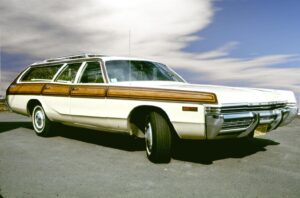
1972 Dodge Monaco Station Wagon
We arrived safely in Summit, New Jersey and we were installed in the local hotel. After a little time we found some temporary lodging while we looked for something more permanent, ultimately finding a nice apartment in Chatham Township with a view of the New Jersey countryside. My time with Feedback, Inc. eventually lasted for 3 years, and in that time I visited something like 30 US States and many Canadian Provinces, calling on colleges and universities. Because I had to demonstrate the product I had to drive everywhere, and for that purpose was provided with a 1972 Dodge Monaco Station Wagon. It’s worth me noting how much this car impressed me, bearing in mind that I was coming from an Austin Healey Sprite in the UK, which is about the size of one roller skate! The Monaco was so huge that it was possible to lay an 8′ x 4′ sheet of plywood flat down in the back, and I mean flat! It has something like a 6 liter engine, with air conditioning and power everything, and was nearly 19 feet long! I believe it got nearly 10 miles to the gallon! I recall it cost $5000 new and was a reliable and comfortable car. I did around 50,000 miles a year in it, so that was a good thing, They don’t make cars like that any more. I recall the furthest single trip I took in it was from New Jersey to Oklahoma, a distance of some 1500 miles. Of course, the roads were not as crowded then as they are now.
But our 2 year contract had run for 3 years and we had to decide what to do next. The company wanted to return me to the UK and we did seriously consider that. But the UK was not in a good place economically in 1973 and it looked both impractical and unwise to return. And in any case, we had become rather fond of the American way of life. So I started looking around for a job in the US.
I had an aunt and uncle who lived in Massachusetts (just a few hours north of New Jersey) so we were familiar with the area having visited there many times. House prices were ridiculous in New Jersey, so we decided to look for a home in that state. After some searching we settled on one in Massachusetts, and we live there still! I was hired by Honeywell’s Process Control Division, in Brighton, MA; a very interesting job which involved furnishing and commissioning process control equipment in water and wastewater facilities in the area. My boss George Linnehan was very helpful as a mentor and I learnt much from him. I also met Wayne D. and we are friends to this day I am pleased to say.
While working on the Honeywell sites I came into contact with a number of consulting engineers whose companies designed the plants, and after about 18 months I got a call from Metcalf & Eddy, a consulting engineering company in Boston. I went there for an interview and they spoke as though it was a done-deal that I would work there, showing me my office and meeting my future colleagues. They were right! I started there as an Instrumentation Engineer and my colleagues and I designed and then specified control systems for water and wastewater facilities. It was a rewarding job and required mostly office time, but with some field visits, which suited me very well. I was there from 1975 to 1982, eventually becoming department head. During that time I became increasingly interested in computers, writing a number of magazine articles for the Radio Shack Color Computer and others. This meant learning programming and, like everyone in that era, started with Fortran and BASIC.
In November 1974 we welcomed our first son, Richard. What a joy! Marilyn had been working at a lawyer’s office but left to become a full time mother. Richard flourished, and in 1978 was joined by his brother John, another joy.
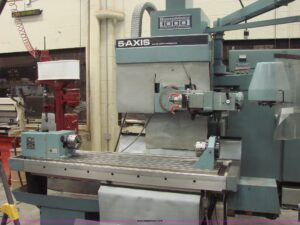
We then embarked on a comfortable life with the boys growing rapidly and Marilyn getting a part-time job when they got older. But by 1982 I was getting a little tired of the commute into Boston and it was getting increasingly time-consuming. So I looked in the paper for something more local and found a promising one in our town at a machine tool manufacturer. Not that I knew much about machine tools! So I went for an interview and must have completely pulled the wool over the man’s eyes because I was offered the job! The company was Boston Digital and they made a line of highly accurate vertical milling machines. My job was Field Service Manager, managing a staff of field service engineers. They wanted someone who could not only manage the department but analyze data on failures to improve product quality. My programming knowledge allowed me to create a number of software products to enhance the usefulness of the machine tools, and this skill got me noticed by the company founders.
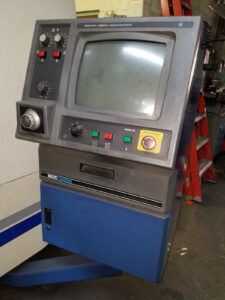
When the time came to develop a new computer-based numerical control (CNC) system for the mills I was asked to form a Software Department to develop the software to run it. A highly skilled software team was brought together for this project. The result was a groundbreaking touchscreen-based control using Motorola 68000 microcomputers.
As part of my duties I was also responsible for managing the building security. We had moved to a new facility and a brand new building in 1982 and the access control and alarm system was installed by Joe F, who is a good friend to this day. To help make the system he was installing more flexible I developed a digital voice annunciator system. His company was involved with the supply of access control systems that included plastic ID badges, rather like credit cards. At that time there were several companies bringing reasonably priced printers to market that could print directly to the plastic card stock. Previously such machines were hugely expensive. However there was no really capable software to make use of these printers. So Joe asked me if I was interested in developing such a software product. It had to be a Microsoft Windows program and I knew nothing about programming in that environment … so I said I would. After a steep learning curve the end result was a program called BadgeBuilder, which is still in use around the world today. Now mostly a legacy program, but a lifespan of 25+ years is not bad for software.
As a result of this, and because I felt it was time to move on, I decided to leave and start my own company to develop BadgeBuilder and other products. So Ashdown Technologies, Inc. was started in 1994 in Milford, MA. I would remiss if I did not note that this was only possible because Marilyn was prepared to become the breadwinner and secured a fulltime job at a major national retail company’s head office. Starting as an in-house temp, she ended her career there as personnel assistant to the company CEO. Quite an accomplishment! She continued to support us for some years as the company strived to become established.
As Ashdown progressed, Richard joined the company and eventually Joe retired. So I bought out his company and another Internet Service Provider company, and moved the business to the Manchaug Mills in Manchuag, MA. This is an 1826 textile mill in the Blackstone Valley, where the well-known product label “Fruit of the Loom” was founded. Part of the Internet company purchase included a Network Operations Center (NOC) which housed a significant number of computers serving web sites and email services, amongst other things. Richard continued to be a key part of the company, working alongside me designing web sites, providing BadgeBuilder technical support, and managing the computers in the NOC room.
I retired from active day-to-day involvement in Ashdown in 2016 and handed the reins over to Richard. However I do continue to help him where and when I can, to keep my technical skills alive.
In retirement I seem to be busier than ever. I’m not sure how I found the time to hold down a job. ![]() I spend my time fiddling with computers and software (still); keeping our many clocks ticking the way they should; doing a little woodwork; and generally maintaining the home. We bought a second home in Florida to be near John in the winter months (although not this winter, 2020, due to this interminable pandemic). We are getting enormous pleasure seeing Richard’s two boys blossom into fine young men, and love becoming part of the lives of John’s two beautiful little girls when down in Florida.
I spend my time fiddling with computers and software (still); keeping our many clocks ticking the way they should; doing a little woodwork; and generally maintaining the home. We bought a second home in Florida to be near John in the winter months (although not this winter, 2020, due to this interminable pandemic). We are getting enormous pleasure seeing Richard’s two boys blossom into fine young men, and love becoming part of the lives of John’s two beautiful little girls when down in Florida.
I am impressed if you made it though to this paragraph and hope you didn’t think it a waste of your time. Unfortunately I cannot give refunds! If we crossed paths at any time in the past I would be very pleased to hear from you. Fill out the Contact Me form and let me know when it was. I would be pleased to hear from you! If you want to see a list of people I remember as friends from my youth, and now have lost contact with, click here.
I’ve had a number of modes of transport over the years. To see a gallery of photos of them click here.

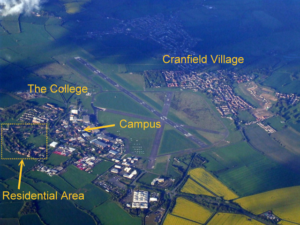
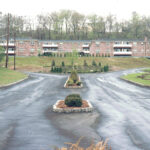
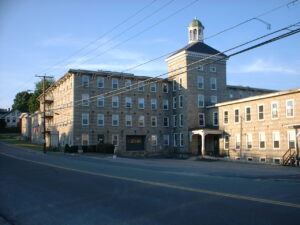
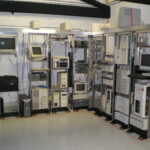
Recent Comments